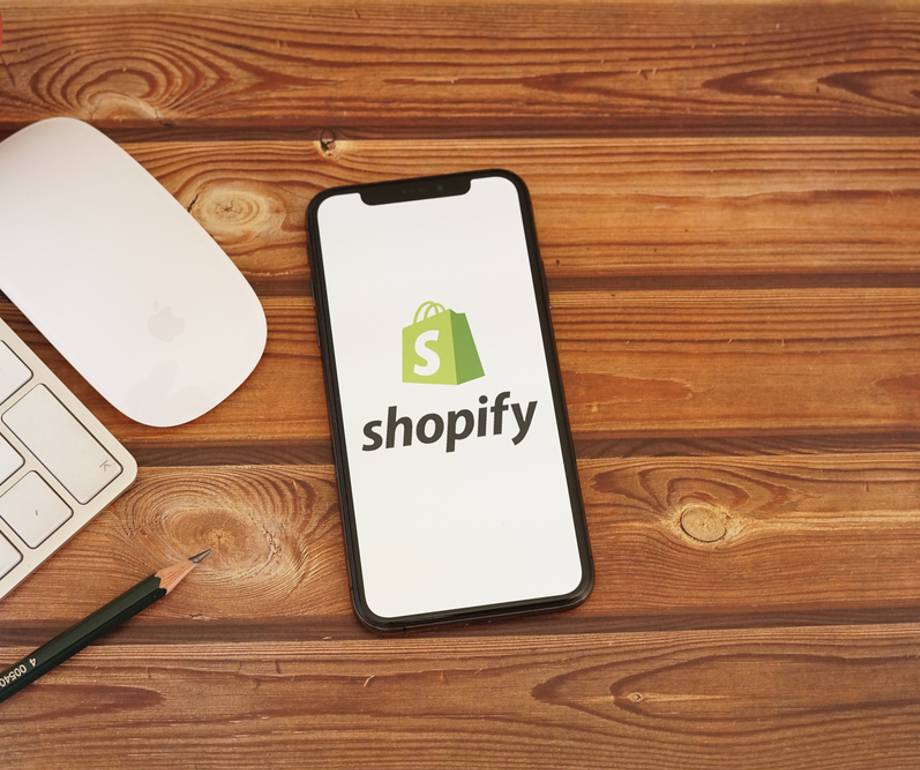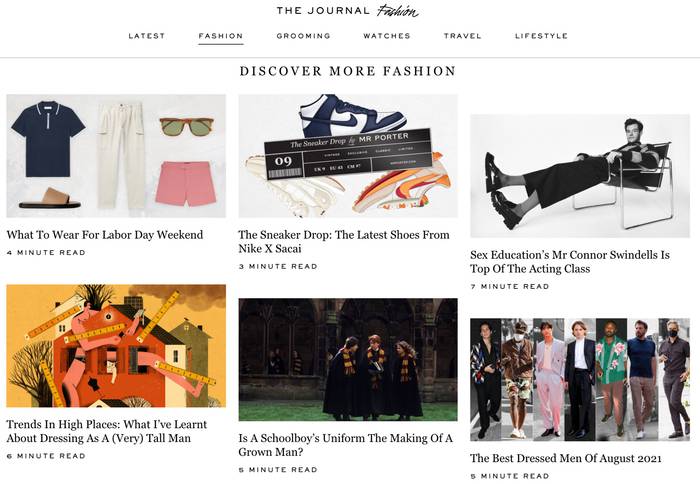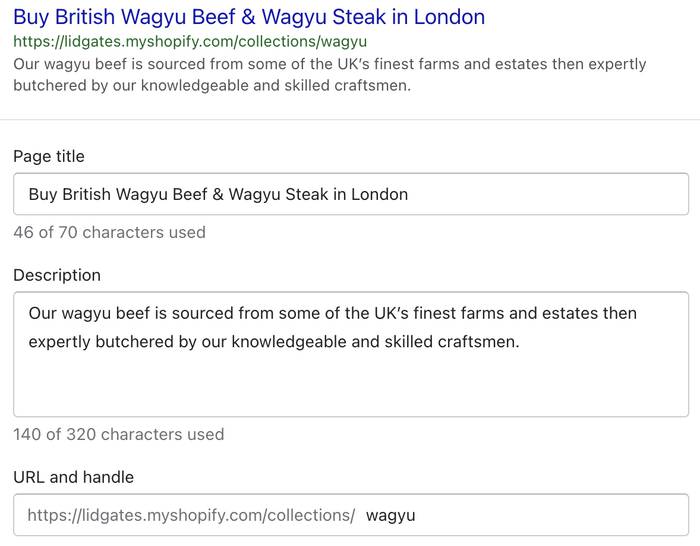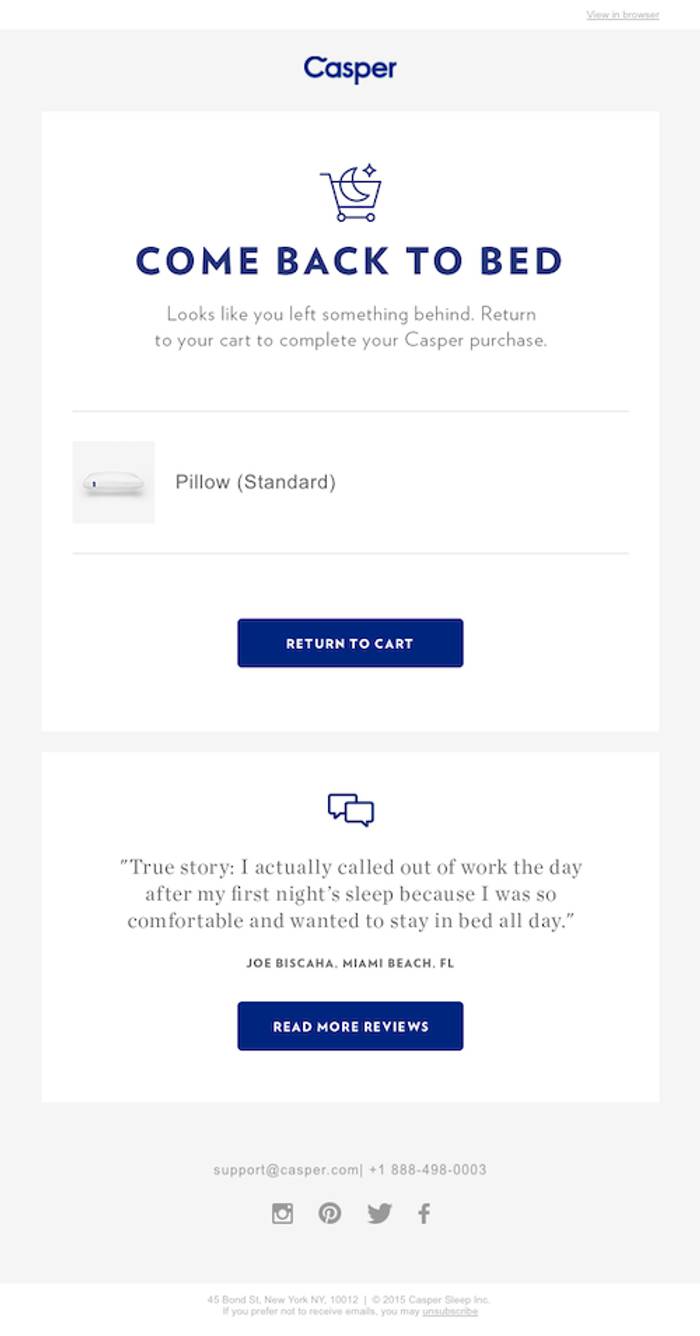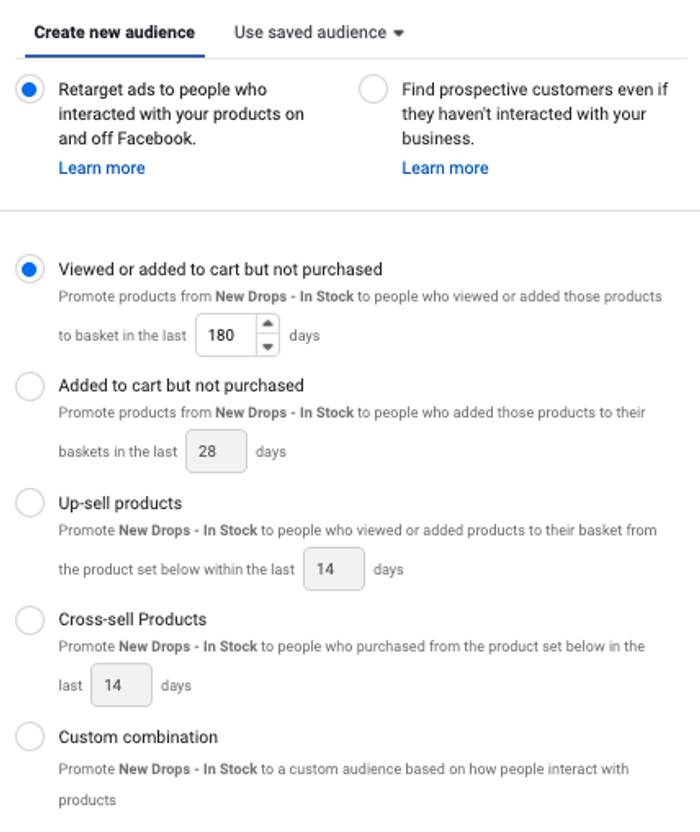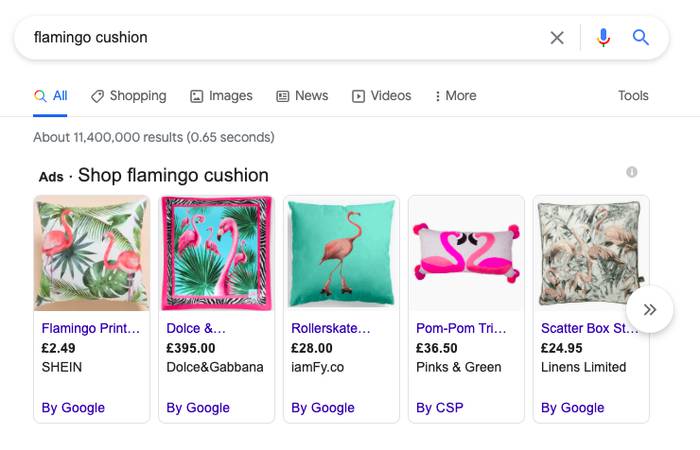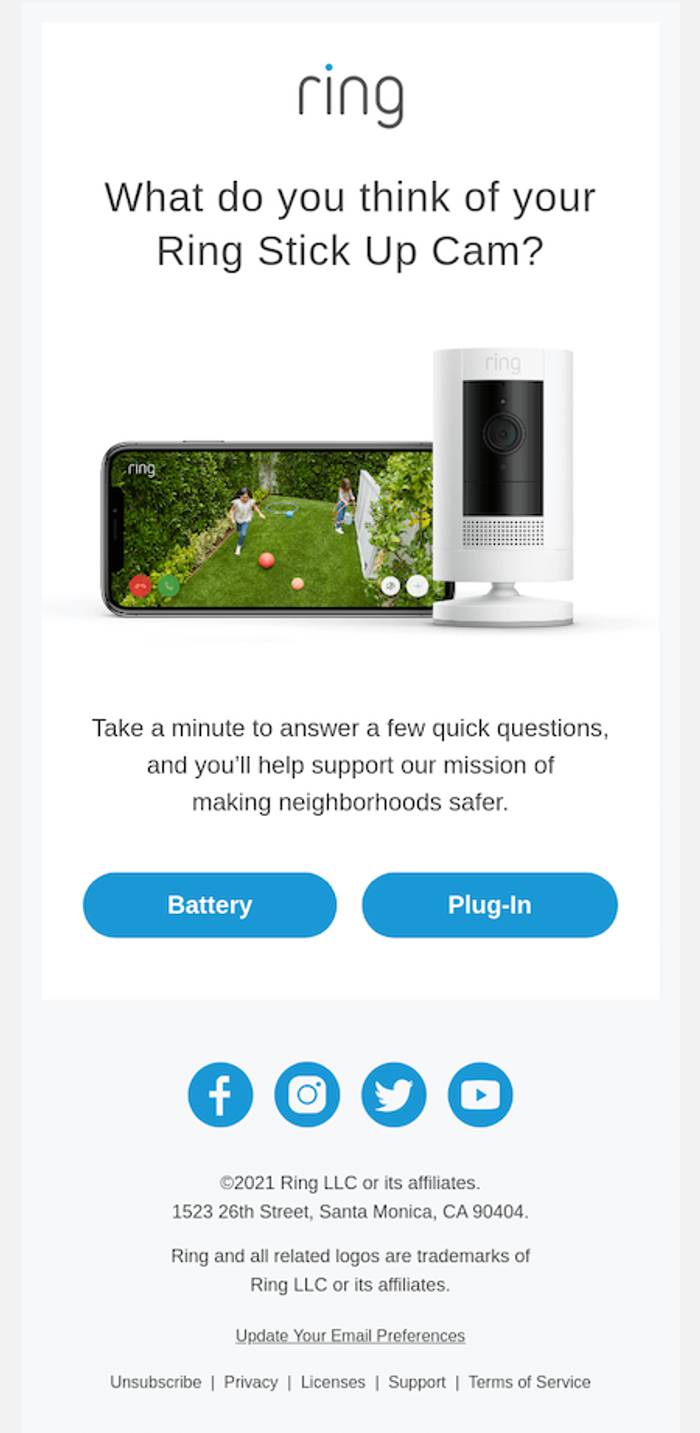There's no stopping the growth of e-commerce in the UK.
UK e-commerce sales are forecast to grow by over 5% every year until 2027. It's estimated that there will soon be over 59,000,000 e-commerce users in the UK — a market penetration rate of over 86% (up from an already-impressive 83% today).
So, if you own a Shopify website — in essence, your 24/7 digital storefront — you'll be wanting to claim a slice of this ever-expanding e-commerce pie.
Here's how.
Shopify marketing strategy: tips & tactics to grow sales
Think of your customers' user journey as like a 'messy hexagon' (forget the traditional sales funnel — we think this is a more accurate representation).
To act as a trigger and ensure your brand name is visible when customers evaluate products and services on offer, they need to know you exist. Here, PR, organic and paid social media and video advertising all play key roles in generating this early-stage brand awareness.
Use PR to reach your audiences where they already are
What types of online and offline news content do your target customers consume? This might include local publications, hobbyist magazines, lifestyle outlets or even industry trade websites.
If you have a new product launch, some company achievements, recent staff hires or perhaps some expansion plans, consider using these sorts of newsworthy ‘hooks’ to secure press coverage in those publications your audience reads. Your hook may be based on some interesting data and insights you’ve found which tie into current trends and topics.
Positive news coverage in the publications your customers read can do wonders for early-stage brand awareness. Consistency is key; repeated exposure builds further trust and recognition.
Online press coverage also has the potential to provide your Shopify website with further benefits. Securing followed links to your website within online news coverage signals to Google that your website is a quality resource. It will be more likely to be rewarded with better rankings in search results.
Utilise video in your paid media campaigns
If you’re running campaigns to reach a large audience, video advertising is a cheap, effective way of generating brand awareness.
Video is a popular, easy-to-consume, cost-effective and highly-trackable format for a range of platforms — YouTube, Facebook, Instagram and TikTok. Video ads at this point should introduce your products or services to an interest-based or lookalike audience, and explain the problem that they solve.
This marketing format also allows you to create an audience of people who have watched your video to feed into tactics further down the funnel.
Not all video is the same, of course — you should consider vertical and horizontal formats to cater for popular channels and formats, including TikTok and Instagram stories.
But don’t just stop at one video! Consider using YouTube video ad sequencing to tell a story about your brand and products, drip feeding a series of ads to users who are engaging with content on Youtube. According to Think With Google, advertisers using video ad sequencing reported a 60% higher brand uplift compared to advertisers who just used one video ad.
When users are deciding who they want to purchase from, you can employ a number of marketing tactics to maximise your chances of securing the sale. SEO, content marketing, email marketing and social media can all play an important part.
Utilise your blog and create a content marketing strategy
Customers can spend hours, days or even weeks deciding on where to purchase what they need. If you’re appearing time and again for the Google searches your customers are making, you’ll become an authoritative, trusted source of information.
The benefits of good search visibility Google need little explanation — it positions you as an industry authority, elevating your brand awareness and ultimately driving more Shopify sales down the line. After all, if you’ve got Google’s seal of approval, what’s not to trust?
To achieve this, consider creating comprehensive blogs or in-depth guides on your blog. What are your target consumers wanting to learn about your products or services? What information are they seeking? Create content that your customers are consuming.
When a content strategy is executed well, the results can be phenomenal.
Content is multi-purpose, too. It positions you as a source of trust, but also provides fodder for social media, where snippets and insights can be shared. Additionally, quality content can attract links from other websites, driving more traffic and boosting your domain authority (improving the chances of ranking in search results).
Optimise your product and collections pages to appear in search results
The more Google real estate your brand or business occupies for the searches your target customers are performing, the more likely they are to discover you, decide you sell what they need and — eventually — part with their cash.
So, as well as creating informative content about your products or services in the form of blogs or guides, make sure the product and collections pages on your Shopify site are fully optimised for search.
Unless you are a household name, customers may not use a specific product or brand name to find you. What words and language do your customers use when searching for your products or services?
This brings us neatly onto our next point...
Apply structured data to your product and collections pages
All in all, Shopify handles structured data fairly well straight out of the box. This includes a number of Shopify themes including product markup. But if yours doesn't, we’d strongly recommend applying it.
This markup provides Google with key information about your products such as price, shipping, availability, and user reviews that can appear in search results. This makes your product’s search result more enticing for users to click on than those of your competitors. Product markup can also be applied to collections pages, which we’d also recommend.
Create an ‘abandonment’ email workflow
When we visit a bricks-and-mortar store, we often have a leisurely look around. We pick up items to inspect, add them to our basket, and continue our perusal. Online users shop in much the same way, engaging with multiple items, adding them to their cart and, sometimes, darting off to do something else before they have clicked ‘buy now’.
Using an email marketing automation tools, you can create an intuitive email workflow that enables you to re-engage with those site visitors who have abandoned their basket, or those users who didn’t quite make it that far and left after merely viewing a particular item.
Abandoned cart emails have a high average open rate of over 40% and, according to the Klaviyo benchmarking report, an average revenue per recipient of almost £5.
These emails can be a great opportunity to find out whether the recipient has any misgivings or questions about the product they were considering, much in the way a sales assistant might in a physical store! But unlike the helpful sales assistant, your email workflow could offer a discount code or coupon to encourage those hesitant shoppers over the line to purchase.
Utilise Facebook’s Commerce Manager
While it may seem like duplication to set up a Facebook and Instagram shop, this will help shorten the path to purchase and help connect customers to the item for them. Already launched in the USA, soon Facebook and Instagram users will be able to purchase items without leaving either app.
Thanks to Shopify’s many integrations, setting up your Facebook Catalogue is easier than you might think. We’ve discussed this in greater detail in our Ultimate Social Media Marketing Guide For Shopify Site Owners!
There’s no manual updating needed — Shopify’s integration will update your Commerce Manager in line with changing stock levels and new items. Having this set up will also allow you to tag social posts containing links to products. This is beneficial for both your organic and paid social content.
So, once you've got the attention of your target consumers, what can be done to nudge them over the sales line and maximise the chance of a sale?
Remarketing ads
Once you’ve built audiences of those who have visited and engaged with your store in the past — this includes your Facebook and Instagram shop — consider retargeting them with dynamic advertising. This presents them with items they have already viewed or added to cart.
Run these ads at a higher frequency than your awareness ads (which should naturally happen, as the audience will be smaller) to re-engage with those who already know about your product or service, helping drive that all-important sale.
Use Google Shopping... strategically!
Google Shopping represents one of the most effective ways to get your products in front of an engaged audience, and Google, recognising the huge number of retailers who are choosing to use Shopify as their e-commerce platform of choice, have helpfully made it super easy for Shopify users to get started.
By simply linking your Shopify store to a Google Merchant Centre account, and then linking this to a Google Ads account, you have everything you need to get started — you can discover all the detail in our PPC marketing tactics for Shopify blog post.
However, just because you can advertise all of your products on Google Shopping, doesn’t necessarily mean you should. Google Shopping, like most forms of advertising, comes with a cost, and you don’t want to get to a point where you are seeing a negative return on ad spend.
When using Google Shopping, split your products into categories by asking yourself these questions:
Which products are your bestsellers?
Which products have the highest profit margin?
On which products are you the most price-competitive compared to other retailers in the market?
These are probably the top three categories that you should start with. Google Shopping is highly flexible — you can add or remove products at any point — so don’t just set it and forget it!
Keep a close eye on which products users are engaging with and which are not making enough of an impact.
So, you've successfully managed to drive a conversion — but things don't stop there. Use the information you've already got to maximise this and turn your leads into loyal, repeat customers through some nifty PPC, email and social media activity.
Make use of tailored ads
You know these people have already bought into your brand, and bought from your store before. This information can be harnessed to tailor your message within your ads, making it more persuasive, bespoke and likely to lead to a repeat conversion.
This could mean using dynamic advertising to cross-promote products to your existing customers. Consider providing post-sale value with hints and tips based on the product or service they purchased from you.
You may also want to create product sets within Facebook Commerce Manager to run ads that highlight specific products, for example new items and new collections.
Build a post-purchase email workflow
Hooray! A customer has bought one of your products. That’s the end goal right? Think again! A well thought out post-purchase email workflow can deliver so many advantages.
Firstly, it has the power to deliver personalised and sincere customer service, thanking the recipient for their business and possibly setting expectations for delivery. This ensures you leave a good impression and increases the likelihood of repeat purchase behaviour.
Secondly — and more crucially to your business growth — it is through this workflow that you can re-engage with the customer, opening up an opportunity to cross-sell other relevant products based on their first purchase.
Timing is everything with post-purchase workflows. Don’t send the second email too early! In fact, 14 days after an order is fulfilled is a sensible minimum.
You can also use the post-purchase email workflow to request reviews of their purchase, and to submit or share user generated content, showing different ways to use/wear the product they bought, or inspire future purchases.
Use Google Ads’ Customer Match to reach and re-engage customers
Once you have a solid bank of customer email addresses, you can upload these to your Google Ads account (and social ad accounts) to create a custom audience of previous customers.
You can then use this information to bid more aggressively for your past customers in your paid search and shopping campaigns, working on the assumption that these customers would be more likely to engage with your brand again if they saw one of your ads in the results.
This audience can also be targeted with display ads if you want to highlight any new products or a particular promotion, or you could use it to create a ‘similar audience’ which you can use to find new customers on YouTube or the display network.
This is a great example of how you can feed back into the top of the sales funnel, expanding your customer base even further!
So, you've seen some cracking Shopify sales — but don't stop there. Make your consumers part of your tribe. If you go about things strategically with email and social media, you can amplify your Shopify sales by having your loyal customers be an additional marketing mouthpiece.
Treat your existing customers
Birthdays are for gifts, of course. By encouraging customers to provide their birthday — either at checkout or in the creation of an online profile — you can use the Klaviyo birthday workflow to send an email on or around their special day offering a discount or free gift.
The more information you have about your subscribers, the more personalised these emails can be, featuring gifts or content that you know they are likely to love based on their previous purchases or other information you have managed to cultivate.
Don’t worry if you haven’t collected their birthday — you can still use this workflow to send an annual treat to them on the anniversary of their first purchase.
Make the most of user-generated content (UGC)
Not only does UGC save time on content creation and drive high engagement with your community, but it can also be used across your website product or service pages and marketing materials. Don’t forget to ask for permission first, of course!
Prompt customers to share their photos and videos by asking for them on your organic social posts and in your email campaigns — a branded hashtag helps to monitor your efforts and grow advocacy via word of mouth.
Repost this content on your social media to show how customers are raving about your products or services - bonus points for using their words, too! UGC is hugely authentic — 51% of consumers are more likely to engage with and/or purchase from a brand if it has shared their social posts in its marketing.
84% share to support initiatives or brands they care about, so continue to reward those existing customers by incentivising this and show that you care in return.
Reward your existing customers with a loyalty program
One highly-effective way to encourage advocacy and repeat purchases is to introduce a loyalty program, rewarding your customers for various actions or interactions with your brand.
For example, this could involve your customers earning points, credits or freebies when they recommend a friend, share some user-generated content, follow you on social media or simply buy from you again. There are numerous platforms that can integrate with Shopify to help you do this, including LoyaltyLion, Growave and Smile.
Looking for a helping hand boosting your Shopify sales?
Whether you’re a new business owner just starting out or an established company exploring your D2C options, there’s always room to grow your Shopify sales.
If you need some help developing a marketing strategy which boosts your bottom line — or perhaps you’d prefer some consultancy on setting up and executing them in-house — drop our team of marketing experts a message.
Who doesn't want to grow their Shopify sales...?
Contact our team todayPost by

Our SEO Lead with over 15 years’ experience, James calls on an extensive knowledge of search and works closely with our content team to deliver targeted, results-driven SEO strategies.
Project
Post by

Laura joined Team Extreme in 2017 and through the years has refined her social media skills to become our Paid Social Strategist. She works with our social clients to plan and execute content across a broad range of sectors and channels, helping clients maximise their results and ROI.
Project
Post by

Lucie is our lead on all paid media activity, overseeing our talented paid media team and managing the strategy and implementation of all paid search campaigns across multiple platforms. Fully Google qualified and working directly at Google prior to joining Extreme, there's not much Lucie doesn't know about PPC!
Project
Post by

Johnny bridges our content and SEO teams, creating and managing strategies that elevate clients' organic search visibility.
Project
